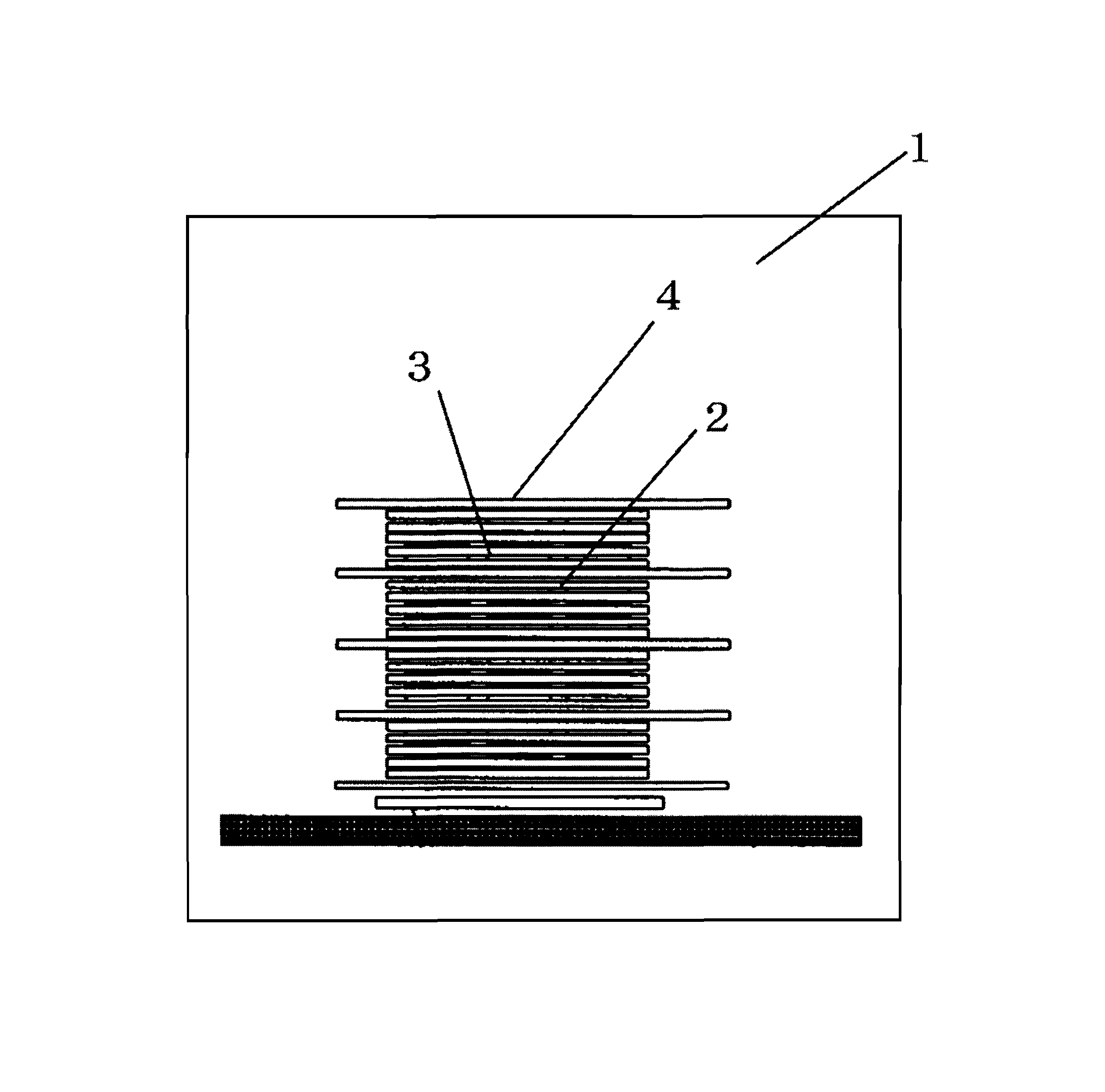Anti-adhesion membrane
a technology of adhesion membrane and anti-adhesion layer, which is applied in the direction of peptides, drug compositions, peptides/protein ingredients, etc., can solve the problems of increased risk of re-operation of primary disease, increased risk of adhesion, and difficulty in handling gelatin films, etc., to achieve uniform crosslinking, excellent shape stability, and high strength
- Summary
- Abstract
- Description
- Claims
- Application Information
AI Technical Summary
Benefits of technology
Problems solved by technology
Method used
Image
Examples
example 1
[0069]Gelatin (produced by Nippi, Inc., alkali treated product derived from swine, weight-average molecular weight: 132,000, jelly strength: 257 g) was dissolved in distilled water to obtain a solution containing 5% by weight of the gelatin. An amount of 13 mL of the obtained solution was casted into a petri dish (size: 14 cm×10 cm) made of polystyrene resin, and air dried as it was to obtain a non-crosslinked gelatin film having a thickness of approximately 40 μm.
[0070]A laminated body of the non-crosslinked gelatin films having a thickness of 160 μm was obtained by laminating four sheets of the non-crosslinked gelatin films. Each of the non-crosslinked gelatin films forming the laminated body of the non-crosslinked gelatin film was assigned one of numbers 1, 2, 3 and 4 in a sequential order from the top.
[0071]Fluorine resin sheets having a thickness of 1 mm were disposed on the both faces of the obtained laminated body of the non-crosslinked gelatin film. In addition, aluminum pla...
example 2
[0080]Gelatin (produced by Nippi, Inc., alkali treated product derived from swine, weight-average molecular weight: 191,000, jelly strength: 255 g) was dissolved in distilled water to obtain a solution containing 5% by weight of the gelatin. An amount of 50 mL of the obtained solution was casted into a petri dish (size: 14 cm×10 cm) made of polystyrene resin, and air dried as it was. As a result, 20 sheets of non-crosslinked gelatin films having a thickness of approximately 160 μm were obtained.
[0081]The non-crosslinked gelatin films were allowed to leave at rest in a manner shown in the figure in a vacuum drying apparatus. That is, gelatin films and fluorine resin sheets having a thickness of 1 mm were laminated alternately to form a shape in which the non-crosslinked gelatin film is sandwiched between two fluorine resin sheets without failure. Furthermore, an aluminum plate having a thickness of 3 mm was disposed on every five non-crosslinked gelatin films.
[0082]Here, each of the ...
example 3
[0088]Gelatin (produced by Nippi, Inc., alkali treated product derived from swine, weight-average molecular weight: 132,000, jelly strength: 257 g) was dissolved in distilled water to obtain a solution containing 5% by weight of the gelatin. An amount of 50 mL of the obtained solution was casted into a petri dish (size: 14 cm×10 cm) made of polystyrene resin, and air dried as it was to obtain a non-crosslinked gelatin film having a thickness of approximately 160 μm.
[0089]Fluorine resin sheets having a thickness of 1 mm were disposed on the both faces of the obtained laminated body of the non-crosslinked gelatin film. In addition, aluminum plates having a thickness of 3 mm were disposed on the both faces of the obtained laminated body, and the resulting laminated body was disposed on a shelf in a vacuum drying apparatus. In this state, thermal crosslinking was carried out under a pressure of 1 Torr or less at a temperature of 135° C. for 8 hours.
PUM
| Property | Measurement | Unit |
|---|---|---|
| temperature | aaaaa | aaaaa |
| pressure | aaaaa | aaaaa |
| temperature | aaaaa | aaaaa |
Abstract
Description
Claims
Application Information
 Login to View More
Login to View More - R&D
- Intellectual Property
- Life Sciences
- Materials
- Tech Scout
- Unparalleled Data Quality
- Higher Quality Content
- 60% Fewer Hallucinations
Browse by: Latest US Patents, China's latest patents, Technical Efficacy Thesaurus, Application Domain, Technology Topic, Popular Technical Reports.
© 2025 PatSnap. All rights reserved.Legal|Privacy policy|Modern Slavery Act Transparency Statement|Sitemap|About US| Contact US: help@patsnap.com


